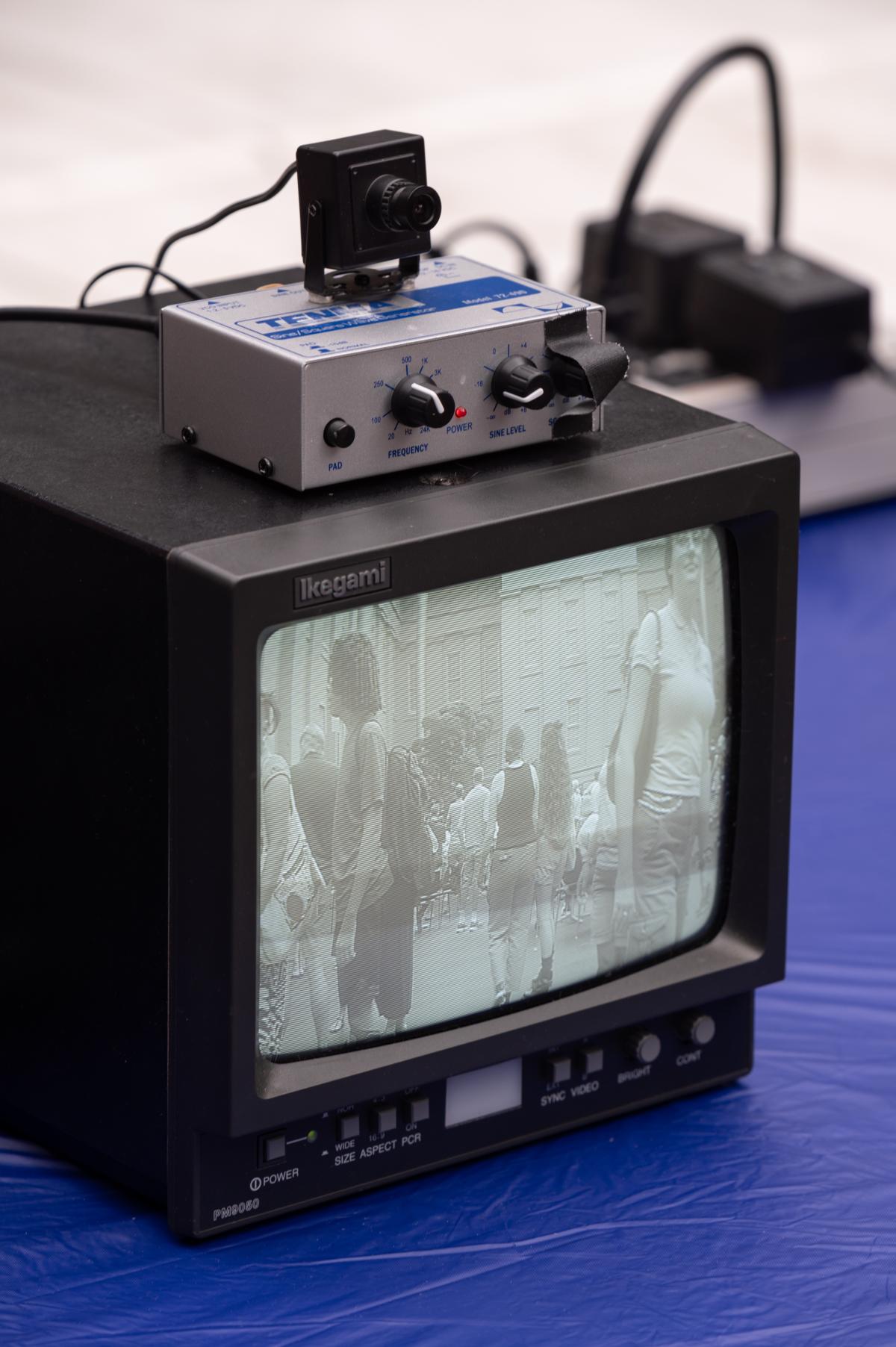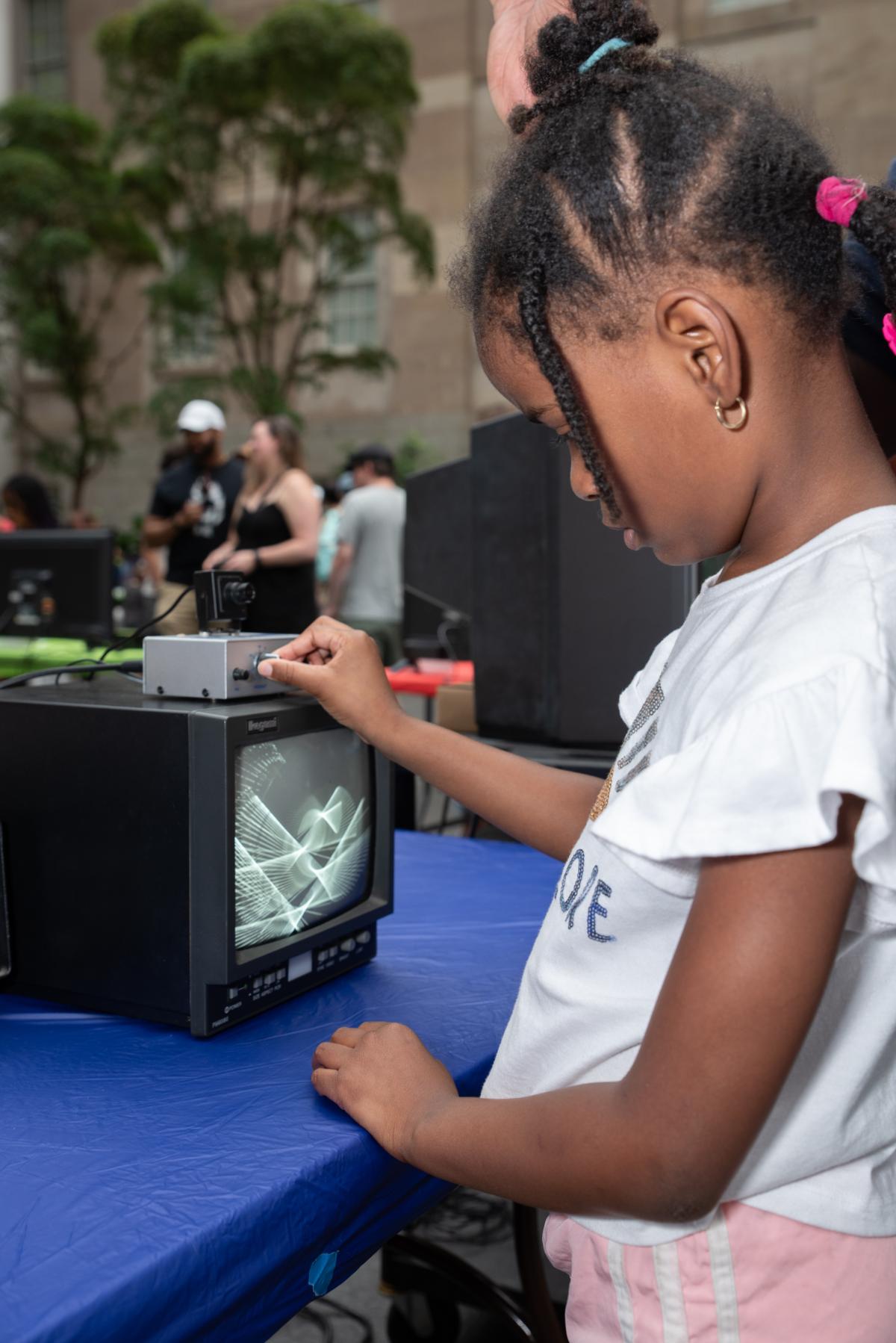What’s in a Wobbulator?
What is it? Where did it come from?
Recently, SAAM acquired a “Wobbulator” built by Nam June Paik and Shuya Abe for its Nam June Paik Archive and were able to share a working replica with the public at the 2024 SAAM Arcade. But, first, what is a Wobbulator?
The Wobbulator is a modified cathode-ray tube (CRT) television monitor that alters any video it displays, creating unique wave-like effects, visual distortions and abstract patterns. The video wobbles. Nam June Paik, along with his collaborator Shuya Abe, developed the Wobbulator in the early 1970s as part of their experimental video art projects. Nam June Paik is one of the most well-known media artists and is often credited as one of the founders of video art. Throughout his career he never stopped searching for new ways to use and manipulate video images in his artworks. The Wobbulator exemplifies Paik’s innovative use of technology to transform and expand the possibilities of video art.
One reason the Wobbulator is a fascinating device is that its effects are achieved through direct modifications to the hardware in the television, radically changing the television’s ability to display a video signal. Long obsolete, CRT televisions work by firing countless electrons at a screen. As the electrons hit the screen, a special substance reacts by creating light that we see as the video image. Wobbulators have extra components inside that create a changing magnetic field, and that changing magnetic field redirects the paths of the electrons on their way to the screen, imparting its signature effects to the image.
Users can control the intensity and rate of the 'wobbulations' with dedicated knobs, and there are switches that allow the image to be flipped horizontally and vertically.
The Nam June Paik Archive
In 2009 SAAM became the home of Nam June Paik’s Archive, an impressive collection of the artist’s studio contents, papers, library, and artifacts like radios, televisions, and toys.
William McGuigan, a retired video engineer, attended college at Cal Arts. This is the same university where years earlier Paik and Abe built several wobbulators and further developed their Paik-Abe video synthesizer. Knowing this history, McGuigan rescued their original wobbulator when he learned the school deemed it unsafe and was going to discard it. Years later, when he rediscovered the decommissioned wobbulator among his possessions, he decided to study the object and build a working replica.
In the spring of 2024 McGuigan delivered both the original and his working wobbulator to SAAM. Museum staff convened to welcome him and these donated additions to the Archive, and to record video of him discussing the history of Paik’s wobbulator and demonstrating its function using the replica.
Playing the Wobbulator at SAAM Arcade
SAAM Arcade is an annual celebration of creativity and innovation in video games. This year, conservators who work in SAAM's Lunder Conservation Center hosted a table that featured the Wobbulator replica and Halo 2600, an Atari game from the museum’s collection.
During the event, the replica Wobbulator allowed visitors of all ages to interact and create their own video manipulations and ‘wobbulations.’ This hands-on experience provided participants with a unique opportunity to engage with and understand Nam June Paik's work from a practical perspective, gaining insight into his creative process and technological innovations.
The playful nature of the Wobbulator makes it a great bridge between the world of media art conservation and the world of video games featured at SAAM Arcade’s annual celebration of gaming’s past, present, and future.
Saisha Grayson is curator of time-based media at SAAM.
Dan Finn is conservator of time-based media at SAAM.
Anna Nielsen is program coordinator at SAAM's Lunder Conservation Center.
Ana G. Calderon Puente is a Time-Based Media and Digital Art Fellow at the Smithsonian.



















